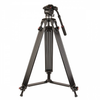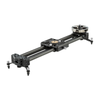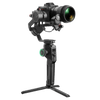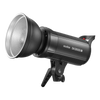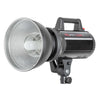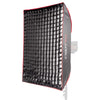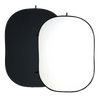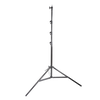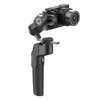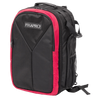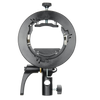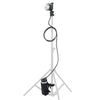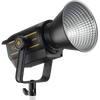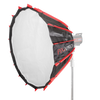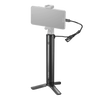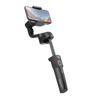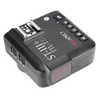PiXAPRO Triggers - See how they compare!
As every photographer knows, triggering your flashes from camera is massively important to keep a nice flow to your shoot. In this Blog we take a look at the ST-IV, ST-III, ST-III+ and PRO AC Triggers and see which is best suited for your individual requirements.
Functions
Each three triggers do offer the same basic functionality. They all are capable of Manual Flash triggering and control, which is very helpful when it comes to controlling multiple lights at the same time. The ST-III, ST-III+ and ST-IV, being the more advanced models compared to the PRO AC, also allow for more in-depth features such as High-Speed Sync and TTL (Through the lens) supports, offering even more possibilities for your shoot. The ST-III+ has a capability to use Bluetooth, something that none of the other triggers are able to do, enabling you to use the trigger in conjunction with an app, allowing you to control your flashes from a smartphone or tablet. The ST-IV does however have one more function that neither the ST-III or ST-IV, and that is TCM. TCM means TTL-Converted-Manual, and what this means is that it will read the flash in TTL mode, but rather then automatically adjust the settings without input, it will change them and then switch to manual mode, meaning you are able to make any further adjustments you deem fit.

PRO ST-IV 2.4GHz Flash Transmitter (Godox XPRO)
Control
Each Trigger has a range of different Channels and Groups to choose from, which is extremely useful as Channels allow you to trigger different sets of lights at different times, and groups allow you to individually adjust to settings of each light. When it comes to Channels, the PRO AC offers 16 whereas the ST-IV, ST-III+ and ST-III triggers offer 32, allowing for more freedom when it comes to which lights to be triggered at which time. As for Groups, the ST-III+ and ST-III only offers 5 groups to choose from, but the ST-IV and PRO AC triggers offer up to 16 groups, giving you more options to individually adjust the settings of multiple different lights at a time. Each trigger works on a 2.4GHz radio frequency, and therefore are part of the PiXAPRO ONE System. The ONE System allows you to control and trigger the entire range of PiXAPRO flashes (apart from the RIKO400) from an individual trigger at one time. This is very useful as it removes the need for any excess equipment, which may cause complications during the shoots.


PRO ST-III T 2.4GHz Flash Transmitter Only (X1T)
Compatibility
Making sure that all the triggers are compatible with camera brands is important, as you want to be able to get the best functions possible from your equipment. The ST-III, ST-III+ and ST-IV, have hot-shoes that are specifically made for their individual camera brand and these are compatible with Canon, Nikon, Sony, Olympus/Panasonic, Fuji and Pentax. However, the PRO AC is different as it comes with a universal hot-shoe, meaning that you are able to change the camera brand you are using and still be able to use the trigger. This would be very useful as it allows you to try new equipment to see which is best for you.

PRO ST-III Plus 2.4GHz TTL Flash Trigger With High-Speed Sync & Bluetooth (X2T)
Usability
Each of these triggers are battery powered, and can be used in conjunction with 2x AA Batteries during use, making it much easier to keep these triggers going rather than having to pause and recharge your battery. This Battery Power help to allow each trigger to have a transmission range of up to 100m (In an open area), which is ideal when it comes to working on large shoots and not always being able to be directly next to your lights. The ST-IV and ST-III also have regular firmware updates available to them, meaning they can upgrade and keep up to date with the newest flash lighting being introduced, a feature that the PRO AC trigger doesn’t have available.
Design
Each Triggers have easier to use and understand displays, be they do differ. The PRO AC Trigger has a display which many features descriptive buttons, but does also have a small LCD Display to allow you to see the settings. The ST-III+ and ST-III evens out the layout a little more, as it also has properly labelled buttons, but this time has a slightly large LCD Display, offering more insight into the settings currently being displayed on the Trigger. The ST-IV however has possibly the easiest display to understand, as the button are still labelled and organised neatly, but the LCD Display is much larger and offers a more in-depth look at the settings of your trigger, and helps to make using it much easier. An addition benefit to the ST-III trigger however, is that it features a hot-shoe built into the top of the trigger itself, which can be used as a pass-through. What this means is that you are able to use a Speedlite On-camera whilst triggering off-camera flash, and it allows you to use a third-party trigger at the same time, if you find yourself using multiple brands of flash lighting. The sizes do also differ between these three Triggers. The ST-III is the largest trigger overall, weighing approximately 100g and having dimensions of 72x75x52mm. The improved ST-III+ is slightly smaller at 72 x 70 x 58mm and now weighs only 90g. Next is the ST-IV, which weighs approximately 80g and has dimensions of 90x58x50mm. And finally, we have the PRO AC Trigger, which weighs approximately 60g and has dimensions of 97.6x49.9x36.95mm. But even though they do all differ in size, each trigger is lightweight and compact, perfect for portability and location photography.


2.4GHz PRO AC WIRELESS 16 Channel Radio Flash Trigger Only (XT16)
Conclusion
Each of the PiXAPRO Triggers have their own positives to them. The PRO AC with its universal Hot-Shoe, the ST-III with its Pass-Through Hot-Shoe, the ST-III+ with the Bluetooth functionality and the ST-IV with it TCM Function and larger LCD Display. But no matter which trigger you decide to choose, you will be left pleased and satisfied with your choice.










































